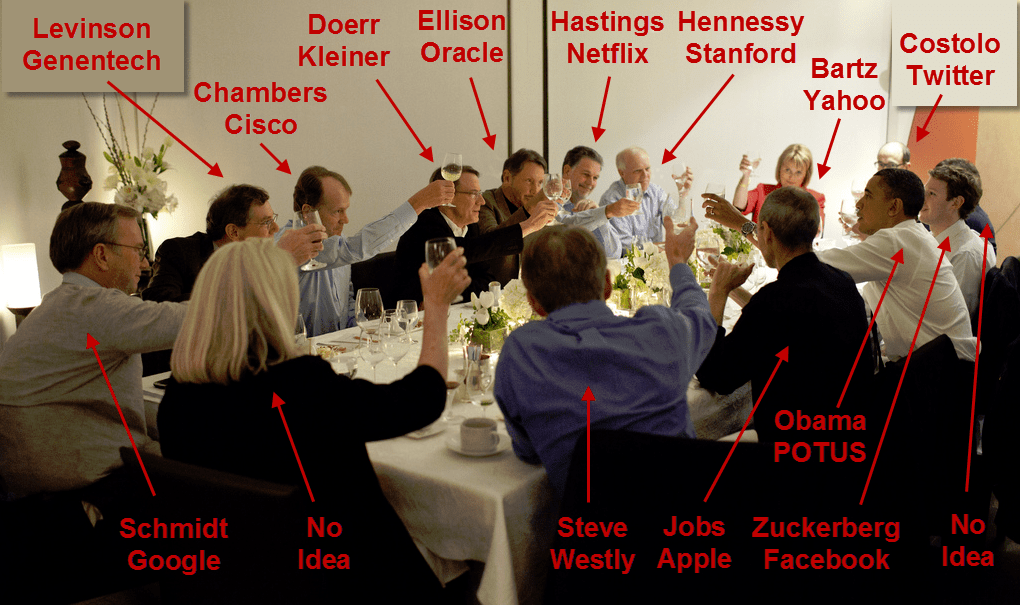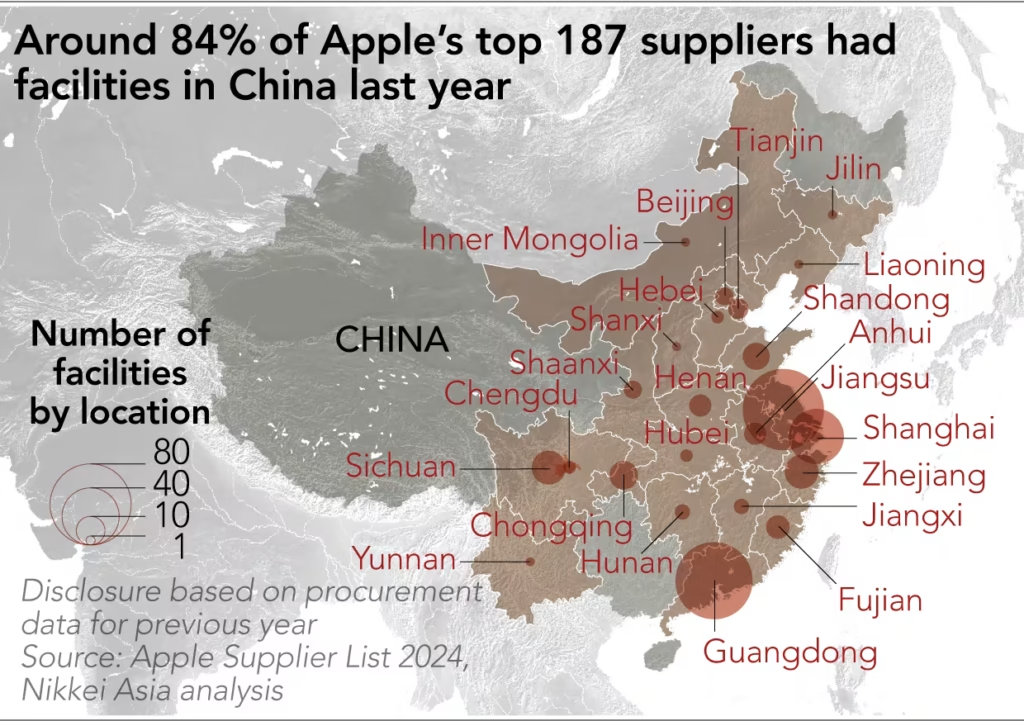Why Did Warren Buffett Walk Away from Apple?
Warren Buffett has been gradually selling off his Apple stock, and his reasons are raising some serious questions. Is it really all about taxes, or is there something bigger at play? Keep reading to uncover the mystery behind Buffett’s ongoing move away from Apple and why even the Oracle of Omaha might be concerned about the tech giant’s future.

Table of Contents
Buffett’s Bold Apple Bet: From 5% to 50%
1. Back in 2016, Warren Buffett’s Berkshire Hathaway made a bold move. They didn’t just see Apple as a tech company, but as a consumer staple, like Coca-Cola. So, they bought 5% of Apple’s stock.
2. As time went on, they kept buying more and more Apple shares, growing their stake to nearly 50%.

3. But then, in 2024, everything changed.
4. Now, Warren Buffett’s Berkshire Hathaway owns 300 million shares of Apple.
5. That sounds like a huge number—$75.1 billion to be exact—but here’s the twist: it’s after selling off 490 million shares of Apple in 2024.
6. This means Warren Buffett has reduced his stake in Apple by more than half from its peak.

7. But wait—Buffett didn’t take the money from selling Apple stock and buy new stocks with it.
8. Instead, Berkshire moved the funds into short-term U.S. Treasury bonds, and now has a massive $276.9 billion in cash just sitting there.

9. So, this wasn’t about finding a hot new stock. Berkshire Hathaway didn’t sell Apple for something better.
10. Buffett said he sold Apple stock mainly because of tax reasons, but it wasn’t a very clear answer, which has led to a lot of different interpretations.
2024 Shake-Up: Why Buffett Started Selling Apple
11. One of those theories? The China Factor.
12. Back in February 2011, President Obama had dinner with key figures from Silicon Valley and asked Steve Jobs a very important question.

13. He asked, “Can’t you make iPhones in the U.S.?”
14. At that point, Apple had 43,000 U.S. employees, but its suppliers had over 700,000 workers in China.
15. Obama was dealing with high unemployment due to the financial crisis and was hoping for a reshoring of jobs back to the U.S.
16. But Jobs firmly replied, “Apple’s jobs won’t come back to America.”

17. In an interview with The New York Times, Jobs explained why he said no to Obama’s request.
18. It wasn’t about cheap labor in China. Jobs said that Chinese workers’ skills, flexibility, and work ethic were just far better than those of American workers.
19. Jobs’ answer was likely shaped by his personal experience with a few critical events.
20. Take 2007 for example. Six weeks before the iPhone’s launch, Jobs ordered a change from plastic screens to glass screens.

21. Why? Jobs had scratched the screen of his prototype by carrying it with keys in his pocket.
22. Apple’s engineers reached out to Corning in the U.S. for the new glass screens.
23. But Corning refused, saying they couldn’t meet the six-week deadline.
24. Then Foxconn in China stepped in and accepted the challenge, sparking what would become a race to meet the iPhone’s launch deadline.

25. From that point on, Foxconn became obsessed with meeting deadlines.
26. When the new glass parts arrived at Foxconn’s factory at midnight, they woke up 8,000 workers in their dorms.
27. The workers were given tea and snacks, and within 30 minutes, they were back to work, assembling iPhones.
28. These workers, who lived in company dorms, worked 12-hour shifts, six days a week, cranking out 10,000 iPhones a day.

29. Foxconn’s ability to mobilize thousands of workers instantly is something American companies just couldn’t do.
30. While the U.S. leads in product technology, China’s workers on the factory floor had the skills and speed that the U.S. couldn’t match.
31. So, Apple decided to stick with China, and as a result, about 90% of their products are assembled there.
32. When the U.S.-China trade war kicked off and China started its zero-COVID policy, Apple realized the risks of having so much of their production based in China.

33. Even though Apple has built new factories in places like Southeast Asia and India, it’s still tough to reduce reliance on China.
34. Of Apple’s 395 suppliers, 40% are based in China, and 100% of the lithium used in their products comes from China.
35. As of 2023, Vietnam emerged as Southeast Asia’s leading supplier to Apple, with 35 suppliers, ranking fourth globally, while 160 suppliers from China are responsible for its parts.
Apple’s Global Gamble: The Future of iPhone Production
36. The iPhone alone makes up over half (52%) of Apple’s revenue.

37. The companies that assemble the iPhone are Foxconn, Pegatron, Luxshare Precision, and Wistron.
38. These assembly plants are mostly based in Zhangdong, Jiangsu, and Shanghai, and 77% of iPhones are assembled in China.

39. Apple’s reliance on China has become a growing problem in both China and the U.S.
40. Looking ahead to 2024-2025, Apple’s sales in China have dropped to 6th place.

41. In the Chinese smartphone market, Oppo now leads at 16.9%, followed closely by Honor (16.7%), Huawei (16.6%), Vivo (16.1%), Xiaomi (15%), and Apple at 13.7%.
42. The Chinese government has begun restricting iPhone use for government employees and state-owned enterprises. Many Chinese consumers are also happy with local brands offering more bang for the buck.
43. So, the iPhone is no longer the dominant smartphone in China.

U.S. Politics, Trade Wars, and Apple’s Next Move
44. The U.S. situation got trickier when Donald Trump became president.
45. When the U.S. imposed tariffs on Chinese products, Apple’s China-made products became targets for new tariffs.

46. In the past, China saw Apple as a leader in technology and a company that provided hundreds of thousands of jobs.
47. Today, Apple is just an American company employing hundreds of thousands of Chinese workers.
48. If the U.S. continues to impose tariffs, China could target Apple as a form of retaliation.

49. Chinese regulators are already looking into Apple’s App Store policies and in-app payments.
50. Apple is pushing to bring semiconductor production to the U.S., as chips account for 33% of the iPhone’s production costs.

51. About 48 of Apple’s suppliers have already moved some operations to the U.S.
52. But whether this level of U.S. relocation will satisfy Trump’s demands remains to be seen.
53. Trump isn’t too happy about Apple because it supported Kamala Harris, a Democrat.
54. And don’t forget, in the 2024 election, Tesla donated 100% of its donations to Trump, while Apple gave 96% of its donations to Harris.

Buffett’s Final Play: A Genius Move or Apple’s Red Flag?

Warren Buffett’s decision to reduce his stake in Apple is more than just a tax play. With global tensions rising, especially between the U.S. and China, it’s clear that Apple faces a future filled with uncertainty. While Buffett’s strategy may seem clear on the surface, the underlying risks are anything but simple. As the world shifts, Apple may have to navigate more than just market trends—it could be dealing with political and economic battles that could change the company’s future forever. Keep an eye on what happens next, because this might just be the beginning of a bigger story.
Discover more from Alphazen Dynamics
Subscribe to get the latest posts sent to your email.



